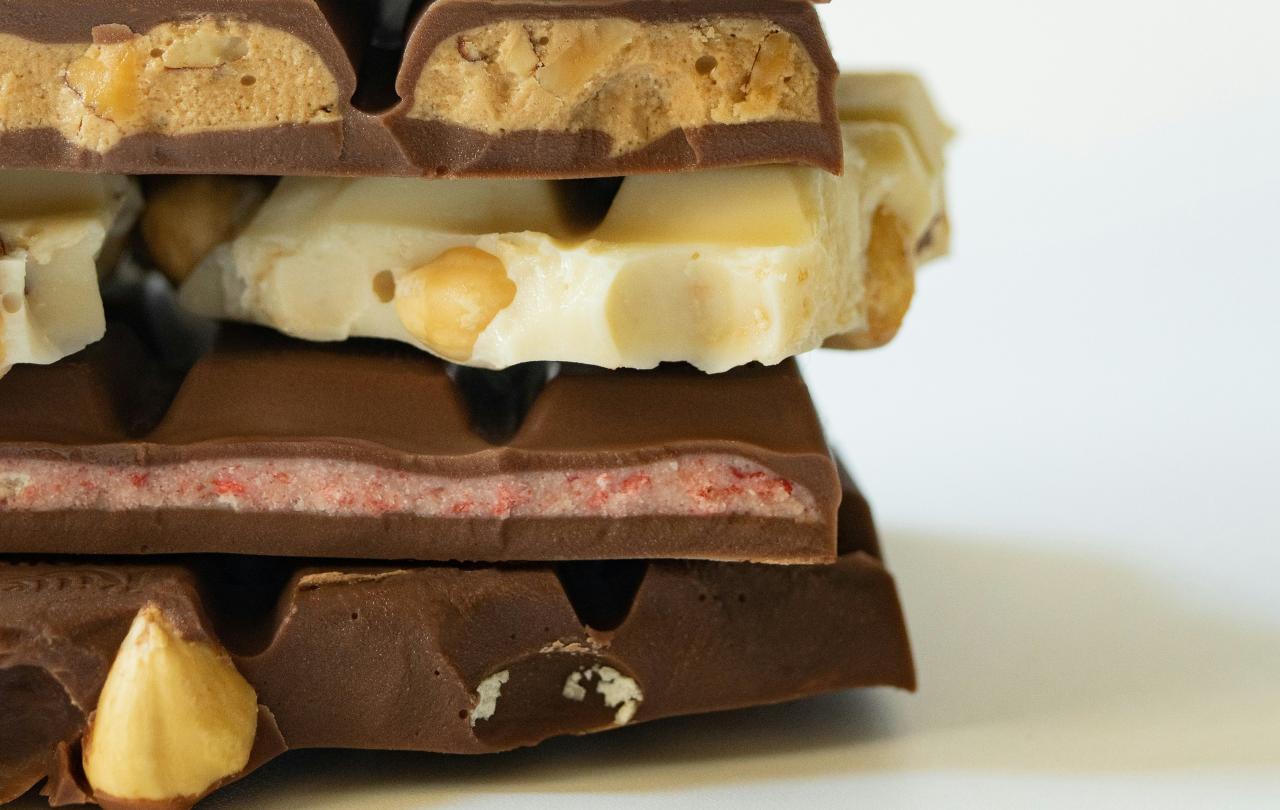
Mini eggs, creamy eggs, filled fancy eggs, and mini bunnies. The aisle ends of the supermarket have heralded the Easter season for several months. But now Easter is over, what chocolate delights are left to tempt us and keep our calendars on track?
Some people mark the turning of the year with calendar notifications, some with key gardening tasks, and some with weather apps and temperature checks. I like to track the seasons with chocolate.
Around September time, the Halloween snack-packs and pumpkin-shaped lollies hallow our shelves with spooky sugar-filled delights. As soon as November 1st hits, Halloween is usurped by Christmas cheer. Family sized chocolate boxes, snowball dusted truffles, and of course the essential stocking filler, the chocolate orange. Christmas is not long over when the colour of chocolate changes from brown (or orange) to pink. Valentine’s Day turns the world into love hearts and fluffy bears, including our chocolatey friends. Once commercialised affection has told us how to woo our loved ones, pink retreats making way for bunnies and eggs.
In years gone by, Lent would have meant the restriction of chocolate in the run up to Easter Sunday. Pancake day was designed to use up the sweet treats in the home so that Lent could be a time of simplicity and prayerfulness. No longer. Pancake day is now an opportunity to buy additional sweet treats and the, once restricted, Easter Egg is front and centre of our aisle ends. Easter is now an extended season of feasting.
Although it may sound like I’m complaining, I actually love the seasons. I find the markers of the year hold me as I navigate the, sometimes, monotonous days. The cocoa-themed calendar guides all of us through the year, pointing to the next big thing. The Church of England’s calendar, with its traditional liturgical seasons, colours, phrases, and festivals has declined in usefulness as churches are less frequently the focal point of communities. Perhaps the chocolate calendar can provide an alternative rhythm to the year for supermarket shoppers.
So, after Easter, what comes next? The Halloween chocolate theme feels a long way off. In the Church of England ‘ordinary time’ marks this summer space between Pentecost and the anticipation of Advent. Days without especially special celebrations or rituals are simply ordinary days. But the ordinary days can also be sacred in their own way. They too carry meaning, hope, and an opportunity to encounter God. So in this ordinary time what should our chocolate calendar promote? Probably just a really good bar of chocolate.
Celebrate our 2nd birthday!
Since Spring 2023, our readers have enjoyed over 1,000 articles. All for free.
This is made possible through the generosity of our amazing community of supporters.
If you enjoy Seen & Unseen, would you consider making a gift towards our work?
Do so by joining Behind The Seen. Alongside other benefits, you’ll receive an extra fortnightly email from me sharing my reading and reflections on the ideas that are shaping our times.
Graham Tomlin
Editor-in-Chief





